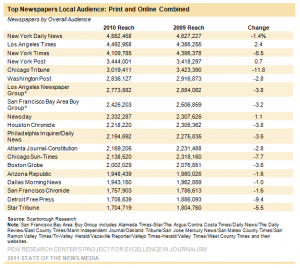You’re on Twitter, right?
Yeah, but guess what, lots of you are still doing it wrong. It’s not just a matter of being on Twitter but also of how you interact (assuming that is, that you interact), and what you send out to the world to make sure your digital footprint is as deep and defined as you’d like it to be.
Let’s face it, just like some other things (swimming and sparring have been used as examples recently) – you can know how to do it “by the book,” but until you feel water on your skin or a jab to the face working with the tools and on the platform isn’t the same beast at all.
So, to figure out if you’re actually doing it wrong, take this quickie quiz and see where you fall. You might be doing it wrong if… Continue reading

